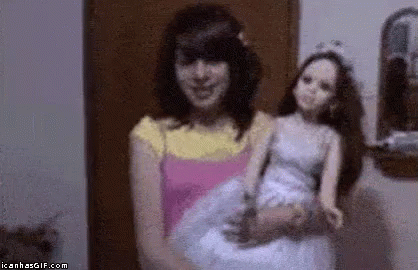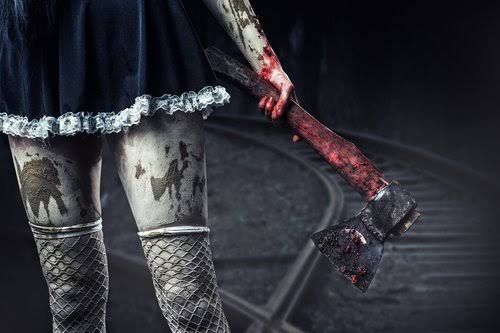7 Terrifying Japanese Urban Legends That Are Based on True Stories.
A haunted village in Kyushu, a doll possessed by a girl’s spirit in Hokkaido—these may sound like Japanese Horror movies, but they’re real-life stories based on actual events. Not only that, you can go and visit the origin of many of these creepy stories for yourself, if you dare.

While Japan’s yurei and yokai (ghosts and mythological spirits) are based on old superstition, the following stories are more than real. All we have to say is, whatever you do, don’t open the portal to Tomino’s Hell—no matter how tempting it may be. Some stories are better left on paper, without a second chapter.
Here are seven Japanese urban legends that are totally based on reality to tell in the dark this Halloween.
The lawless Inunaki Village
If you stumble upon the entrance to Inunaki Village, you will be greeted by signs to stay away, warning “the constitution and laws of Japan do not apply here.”
Sitting in the countryside of Kyushu’s Fukuoka Prefecture, this abandoned village is only accessible through a tunnel in which hundreds of workers were killed when it collapsed during its construction.
 Photo: Wiki
Photo: WikiThe village was slowly abandoned for reasons that aren’t entirely clear. Some say it was because of a widespread plague that wiped out the population. Others say it was just due to its remoteness, but the wildest story is that one of the villagers went crazy and murdered everyone with an axe.
Whatever the case, no one has actually lived here since the end of World War II and electronic devices reportedly don’t work inside. Are those the sounds of barking dogs, or the screams of dead workers that you hear emanating from deep inside the tunnel?
The doll that grows human hair

Back in 1918, a seventeen-year-old boy in Hokkaido bought a doll at the market for his two-year-old sister, Okiku. The doll looked similar to her as they both had an okappa hair cut, a bowl cut with straight hair down to the chin. She loved the doll so much that she took it everywhere with her, even to sleep. When Okiku died months later, the family named the doll after her and prayed to it at their household shrine.
Scientists have analyzed the hair of the doll and concluded that it is real human hair—from a child. Freaky.
It wasn’t long after they noticed something strange happening—the doll’s hair was gradually growing longer. Even after cutting it, the hair kept growing back. It was at that moment the family knew they messed up.
Okiku’s father gave the doll to Mannen-ji Temple in Iwamizawa City, Hokkaido, where it can be visited to this day (no photos allowed). Scientists have analyzed the hair of the doll and concluded that it is real human hair—from a child. Freaky.

The remoteness of the temple makes it extremely hard to access without a car, and even then it can be dangerous when there’s heavy snowfall. Some ghost tours do take visitors here, but they are typically only in Japanese. In case you were thinking about trying to see this demonic doll for yourself.
The human sacrifice of Maruoka Castle
Hitobashira, a type of human sacrifice, was practiced in Japan up until the 16th century. Workers would wall up live victims in pillars, dams, and other building foundations to appease the gods, who would protect the building from enemy attacks.

Maruoka Castle in Sakai, Fukui Prefecture is home to one of the most famous hitobashira stories. One of the castle walls kept crumbling down during its construction, no matter how it was reinforced. As a last resort, the workers suggested making a hitobashira, and a woman named Oshizu was selected to be the sacrifice.

She agreed to be sacrificed under the condition that her son would become a samurai. The castle was built successfully, but the promise to Oshizu was never fulfilled. Now every spring, the castle moat floods during spring rains—the tears of Oshizu’s curse.
Red Room Curse
This modern scary story comes in the form of a computer popup and originated in the 1990s when personal computers were just starting to boom across Japan.
The curse starts with a pop-up that appears on a victim’s computer screen when they are alone in a room. It has a red background with black letters asking “do you like the Red Room?” It’s impossible to close out of the popup, it’s frozen on the screen.
You won’t be able to escape the room you’re in when the pop-up appears, as the doors and windows will suddenly lock. Your body will be discovered days later, dead in your room, surrounded by walls painted red with blood.
The Red Room Curse became popular in the dark corners of the internet after a 12-year-old girl in Sasebo, Nagasaki was murdered by her classmate. The murderer, who has remained unnamed due to being 11 years old at the time, was found to have a link to a “Red Room” bookmarked on her computer.
The red cape murderer
The Aka Manto is based on a real murderer, who kidnapped and killed three people while wearing a blue blanket in central Fukui Prefecture in 1906.
Modern stories about Aka Manto (literally red cape) have him wearing a long red cape and a white mask. He appears in bathrooms when victims are in an *ahem* vulnerable spot on the toilet and asks, “red cape, or blue cape?”
Other versions of the story have him asking, “red paper, or blue paper” after victims realize there isn’t any toilet paper to wipe their butts on—the horror!

If you answer “red” he will decapitate you, causing your blood to flow over you like a red cape. If you answer “blue,” he with strangle you to death, turning your body blue.
Answer a third color or decline to answer to foil his gruesome plans. It might save your life. This legend appeared in the 2015 American TV series Scream Queens.
Tomino’s Hell, the cursed poem
“Elder sister vomits blood, younger sister is breathing fire while sweet little Tomino spits up the jewels.” This gruesome poem called Tomino’s Hell will bring death to anyone who reads it aloud.
Written by Saijo Yasu as part of a poetry collection in 1919, the poem is about a young boy named Tomino who descends into the eight levels of hell. Some interpret the poem to be about Tomino losing his soul from having killed one of his parents, as there is a special place in Buddhist hell for people who commit this sin. Others see it as a metaphor for Tomino going to war and dying in agony never to see his family again.
In 1974, director Terama Shuji released a movie based on Tomino’s Hell, Den-en ni shisu, (Pastoral: To Die in the Country). He died prematurely at 50 years old due to liver disease, which sparked already forming rumors that reading this poem out loud causes suffering and death.
Apparently reading the poem in your mind is okay. We hope you didn’t read those first lines out loud, whoops. See the full poem translated into English translation here.
Hanako-san, the Japanese Bloody Mary
The “Bloody Mary” of Japanese elementary schools, Toire no Hanako-san or “Hanako of the Toilet” is a spirit that can be summoned but you’d have to be either really brave or just plain crazy.

Hanako-san’s true backstory is unclear. Some say she was a victim of an air raid during World War II who was hiding in the bathroom stall when her school went up in flames. Others say she ran into the bathroom to hide from her murderous parents. Poor girl.
One thing is clear, she died in the third stall of the third-floor bathroom, and that’s where you need to knock to summon her. Knock three times and ask, “Hanakosan, imasu ka?” or “Hanako-san, are you there?” “Yes, I am,” a small voice will respond.
The door will slowly open, and you’ll just be able to glimpse a schoolgirl covered in blood coming out of the toilet before she drags you in with her.
Are there any other scary Japanese urban legends you know of that we missed? Let us know in the comments! Stay tuned for our Halloween special where we publish stories from our readers who have experienced paranormal activity in Japan.






Comments
Post a Comment